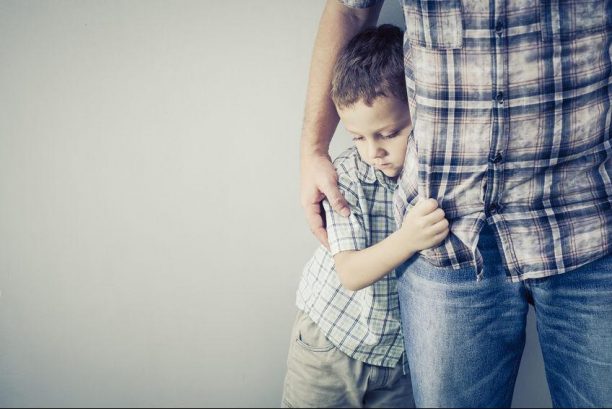10 Essential Ways Teachers Can Stop Cyberbullying
by on 02/08/2025 ...

With the rise in technology in today’s world, bullying is no longer limited to schoolyards – it has changed to text, email, and social media. And such devastating change on bullying on the Internet has no ‘erase’ buttons. The small step can quickly escalate and end in tragedy.
From the survey of Cyberbullying Research Center, 34% of students in middle and high school had been cyberbullied in 2016 – the most significant percentage reported since the organisation started tracking cyberbullying ten years ago.
It becomes challenging to protect if you don’t understand the problem with cyberbullying. Teachers should be the ones students go to when something wrong happens in school. However, teachers are often the last ones to know about their problems because of their fear. This article has mentioned everything, how teachers can protect students and what actions can be taken to address it.
What is Cyberbullying?
Technology means bullying is not any longer limited to playgrounds. Instead, it occurs anywhere and at anytime. In general, cyberbullying means when some harasses or threatens through the use of the internet, including text messages, email, social media, and gaming sites. It doesn’t require face-to-face contact and physical power like traditional bullying, which is riskier.
Cyberbullying seems to be more extreme. Often students or children say things online which they wouldn’t say in person. What happens worst, with just one click, an embarrassing photo or post is shared all over the website for a whole school to see. In most extreme cases, it gives rise to feelings of suicide and self-harm.
What Makes Cyberbullying Different Than Bullying?
- The most significant difference between cyberbullying and bullying is that the internet gives the offender an extra degree of protection. Because on the internet, bullies can harass and attack their targets anonymously.
- Cyberbullying can happen anywhere at any time. As long as someone has access to the internet, it’s easy to harass someone.
- Since cyberbullies don’t have face-to-face encounters with their victims, bullies are more aggressive and victims more vulnerable.
- The actions done by bullies get shared easily whole over the world.
Types of CyberBullying and Their Effects on Students?
We know there are many ways of threatening someone online. Cyberbullying can manifest itself in different kinds of behaviors. Here are some instances of what cyberbullying looks like:
1. Cyberstalking
Cyberstalking is when someone uses technology to harass and threaten someone repeatedly by sending intimidating messages or engaging in other online activities. Cyberstalkers may make attempts to meet them. The actions are illegal depending upon what they are doing.
2. Impersonation
Impersonation is pretending as someone else and then sending or posting material online with the intent to damage someone’s reputation. For instance, when someone hacks your email account and uses your online identity to post or send embarrassing material about you. Unfortunately, making up fake profiles on social network sites online is common, and it becomes complicated to close them.
3. Flaming
Flaming is when someone posts offensive comments on your web or social media page. This is done intentionally using extreme language and getting into arguments and fights. They do this to cause reactions and enjoy giving stress to someone.
4. Harassment
Harassment includes the constant sending of abusive or threatening messages to someone. In other words, this is an act of sending offensive and insulting statements, giving humiliating comments on posts or photos. They can do this in public as well as private.
5. Denigration
Denigration is when someone sends information about another person that is fake and untrue. This includes sharing photos of someone spreading fake rumors and gossip on any online site or apps.
What Can Teachers Do to Stop Cyberbullying?

In the case of cyberbullying in school, students may also fear losing their cell phone or computer privileges. And this is the reason; students feel a sense of fear from teachers and parents. As a result of cyberbullying, students can experience many adverse effects, including depression, anxiety, decreased academic performance, feelings of isolation, lowered self-esteem, and many others. Preventing cyberbullying won’t be easy. Since it happens on the internet, it’s difficult to complain. However, there are some ways to avoid it:
1. Build Trust with Students
Teachers should be able to trust their students. Explain your reasons and discuss rules for online safety and internet use. Ask your students to contribute to establishing rules, and they will be more interested in following them.
2. Learn How Various Social Networking Apps and Sites Work
Be familiar and updated about the social networking apps like Instagram, Facebook, TikTok and Snapchat. Students have been using. Create a friendly environment with students; then, they follow each other on social media.
3. Recognizing the Signs
Usually, a cyberbullied student looks as if he is unwilling to talk about their day. But sometimes you should be looking for some other changes in their behaviors like – Do they seem depressed? Are their grades suddenly dropping? Are there any changes in their eating and sleeping habits? These are some signs but be also alert if you notice a sudden lack of interest in using a computer or mobile devices.
However, you should keep your finger on the emotional state of students. Go for looking them in the hall. They might skip lunch and sit alone far from everyone in schoolyards. Therefore, listen to them and validate their feelings. Let the student know what’s right and what’s not right.
4. Create Digital Citizens
Teachers have an immense good impact on their students. They listen more to their teachers. So, rather than talking about course subjects, teachers must need to speak out about destructive practices like cyberbullying. We all know cyberbullying is impersonal in nature. Therefore, it becomes essential to teach students that the same rules are applied in and out of the digital world. Teachers can share suicide statistics or hold some class discussions. Make sure the classroom should be a place for them to learn about all those practices.
Many platforms on the internet, such as CSRIU (The Center for Safe and Responsible Internet Use), provide some accessible kinds of programmes to teach students how to be safe online. Even Microsoft also provides a free programme to teach digital citizenship and ethical use of technology.
5. Get Parents Involved
Most parents are unaware of cyberbullying. Therefore, it’s necessary to report what’s happening to their children so they can work for some solutions at home. A study by the Center for the Prevention of Violence states that 70% of teenagers said that blocking cyber friends stopped the abuse. So, teachers can suggest parents buy some software that filters out for students or children.
6. Ask Students to Report It
If you find any about cyberbullying actions, always pay attention to what happens after that. Because that’s the time to get to the truth, some changes won’t work for reporting later on. So, tell the student not to delete those threats from her phone or social media, take a snapshot, and save it for sharing with their guardians.
7. Allow Technology in School
Teachers can focus on the ethical use of technology by incorporating technology in the classroom. If you prohibit the use of technology, the behavior makes the problem worse. Hence, teaching students about the use of technology is better than having them figure out themselves without any guidance.
8. Know When to Use Community Resources
There might come some situations that require the use of community resources, such as counsellors and law enforcement. Getting the community involved in problems like cyberbullying might help to prevent more significant problems. Let the students know that it’s okay to need to talk to someone. Give counselling services to both the victims and culprits. Some situations may go out of hand, and there may come a problem such as distribution of child pornography and need to be reported to legal agencies.
9. Create a Positive School Environment
Cyberbullying is more common in poor school environments. The school should focus on the norm of behavior that changes the climate of schools. They should focus on improving peer relationships through a broad approach. That includes the support of classrooms through rules and meetings. A positive school environment is where every individual is appreciated and respected and can spill into the unity of a group.
10. Team Building
Team building is a powerful way to make groups behave connected. The teacher can give some group activities that make all students of the classwork together. It helps to realize each one’s abilities that become necessary to complete the given action. Teachers can have weekly activities and involve students in socializing with others that they may not engage with.
How Can I Tell If a Student Is Being Cyberbullied?

Usually, students don’t open about the cyberbullying experience. But you should look out for their behavioral changes. It’s important to note that every student reacts differently, and some may not show any unusual behavior. Therefore, teachers should have open conversations about cyberbullying with their students. You can also let your child know that you won’t restrict internet access or the use of mobile phones if they openly share about what they are going through.
Are they distracted? Are they fearful? Has their friend circle changed? Make sure to be aware of your students’ emotional state. Don’t be afraid to check with your students about what’s going on with them. If the situation is out of control, reach out to their parents or counselor.
Frequently Asked Questions
1. What are the common examples of cyberbullying?
This includes sending mean texts to someone, hacking into someone’s social profile, being rude to someone in the online game, spreading fake information about someone, pretending to be someone else and spreading threats, and so on.
2. Is social media the cause of cyberbullying?
A big Yes! Since social media like Instagram, Snapchat, TikTok are growing in popularity, teens are spending more time. And these increased hours spent on these platforms are more likely to be cyberbullied.
3. On which social media does cyberbullying happen the most?
Instagram is the platform where most teenagers reported experiencing cyberbullying, with 42% of those surveyed experiencing harassment on the platform.
4. What is the law of cyberbullying?
Depending upon the situation, cyberbullying can be addressed under civil law or criminal law. For example, harassment, publishing intimate images falls under criminal law whereas, defamation falls under civil law.
5. Can you sue someone for harassing you online?
Yes! You can do a civil suit if someone is harassing you.
6. What type of harassment is illegal?
Actions like harassment due to age, sex, religion, color, pregnancy, genetic information, making a worker’s compensation claim, marital status, national origin are illegal so far.
Final Thoughts
Bullying has been an ever-present problem in our schools, and with the invention of technology, Bullying has come up with a different look. Therefore, by advocating for victims and a school leader for positive change, we can make a school a safe and positive environment.
The Internet can be fun, but it comes with responsibility. You can have fun with technology but take proper caution when using it. After all, a joke is meant to be funny but not at the expense of hurting another person’s feelings.
This article is written by fenced.ai – a complete solution to ensure the digital well-being of children.

































